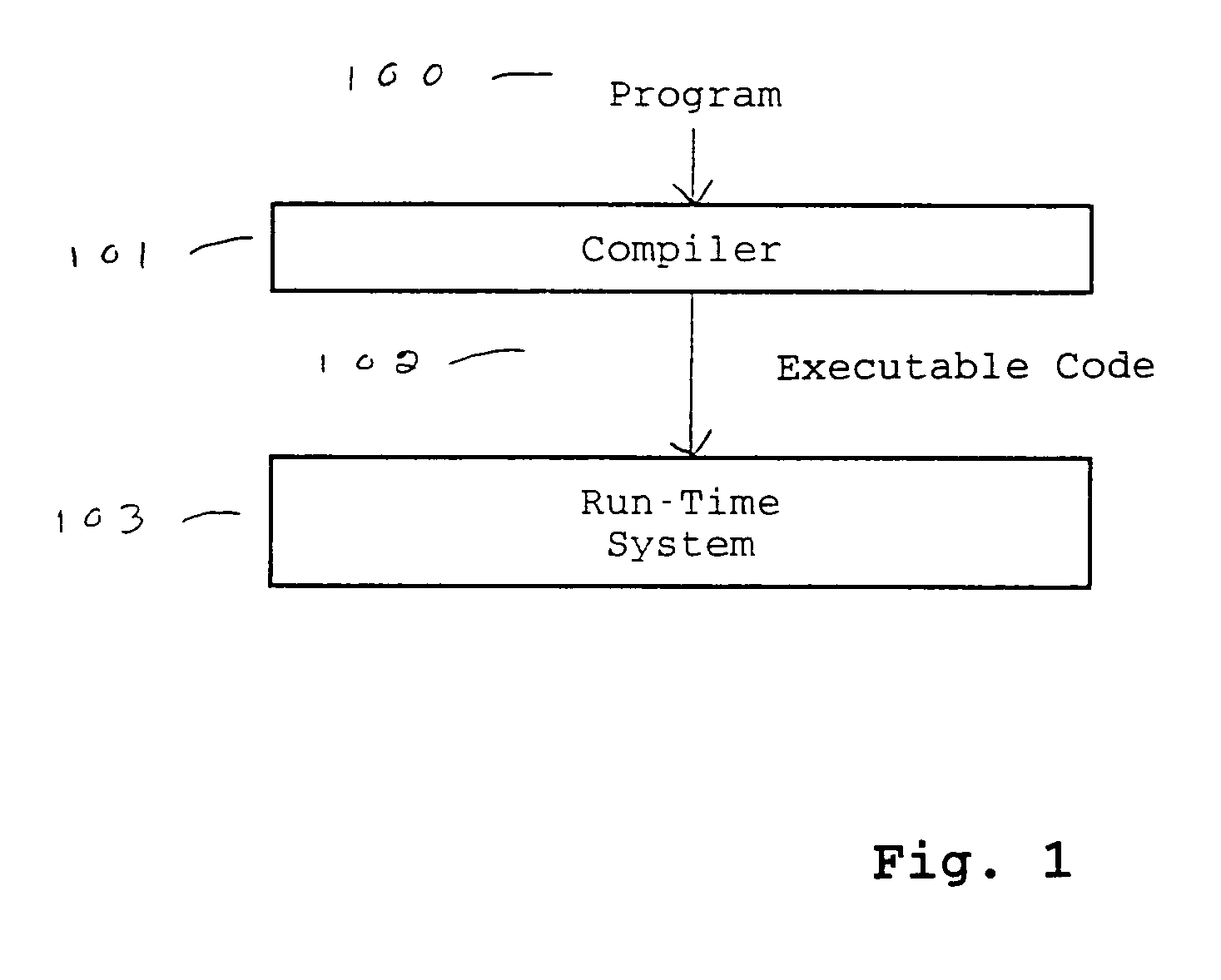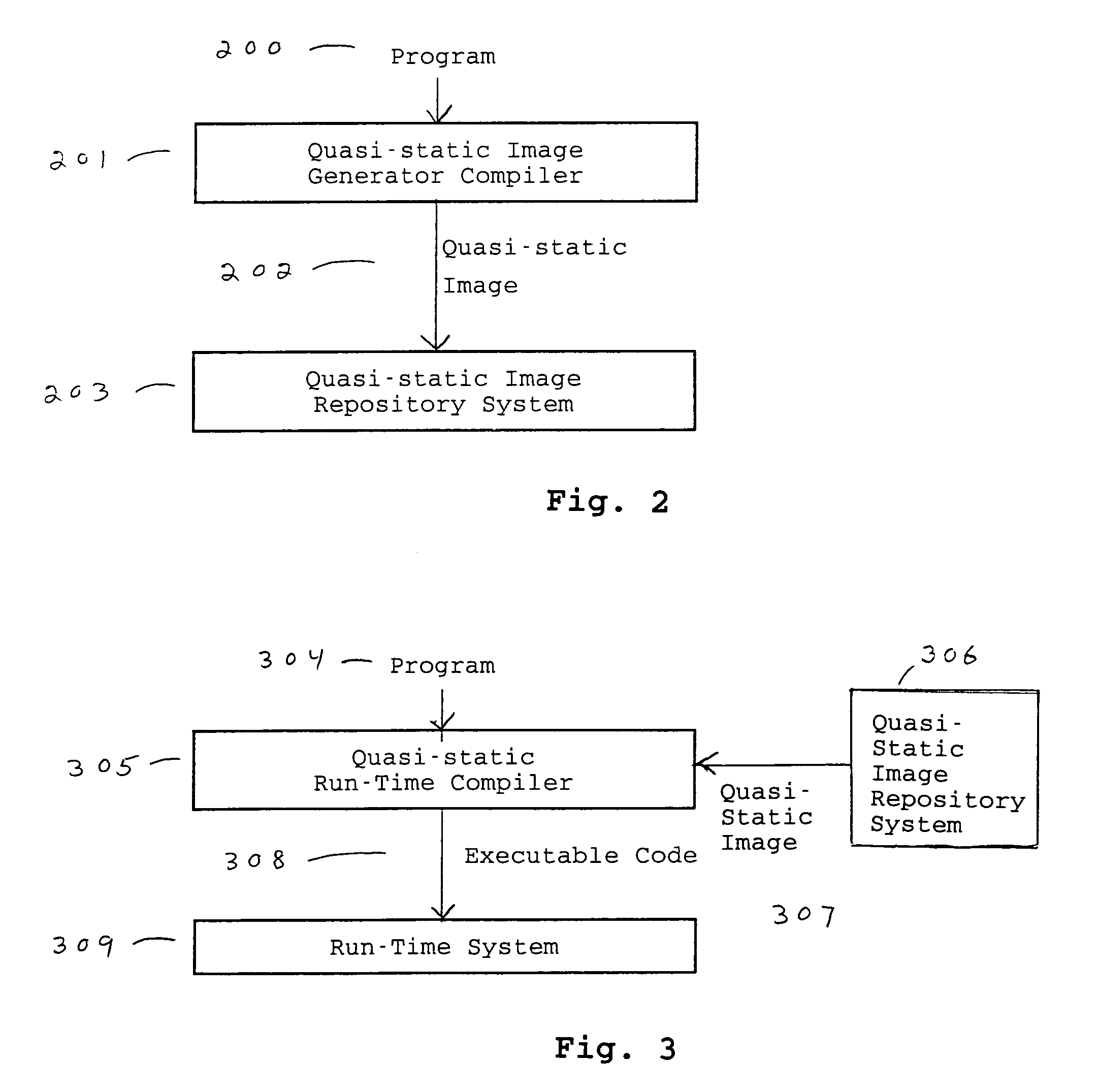Method for compiling program components in a mixed static and dynamic environment
a static and dynamic environment, mixed technology, applied in the field of computer programming, can solve the problems of large memory footprint, high run-time overhead of interpretation, and reliability problems
- Summary
- Abstract
- Description
- Claims
- Application Information
AI Technical Summary
Benefits of technology
Problems solved by technology
Method used
Image
Examples
Embodiment Construction
[0034]Using a Mixed Static and Dynamic Environment
[0035]FIG. 1 shows a prior art system, a virtual machine, to which this invention is applied. A computer program (100) is transformed into executable code (102) by the compiler (101). The compiler may either be invoked at run-time or in an offline manner. The executable code is run by a run-time system (103).
[0036]FIGS. 2 and 3 show a system using an embodiment of this invention. In the preferred embodiment, the compilation activity is broken up into two phases, described in FIGS. 2 and 3. Referring now to FIG. 2, the computer program (200) is processed by a quasi-static image generator compiler (201), referred to as QSI writer. The QSI writer produces one or more quasi-static images (202), referred to as QSI=s, which are persistent images of the executable code. The QSI=s are stored for subsequent use by the virtual machine using a QSI repository system (203). Referring to FIG. 3, the computer program (304), in the form of source co...
PUM
 Login to View More
Login to View More Abstract
Description
Claims
Application Information
 Login to View More
Login to View More - R&D
- Intellectual Property
- Life Sciences
- Materials
- Tech Scout
- Unparalleled Data Quality
- Higher Quality Content
- 60% Fewer Hallucinations
Browse by: Latest US Patents, China's latest patents, Technical Efficacy Thesaurus, Application Domain, Technology Topic, Popular Technical Reports.
© 2025 PatSnap. All rights reserved.Legal|Privacy policy|Modern Slavery Act Transparency Statement|Sitemap|About US| Contact US: help@patsnap.com



